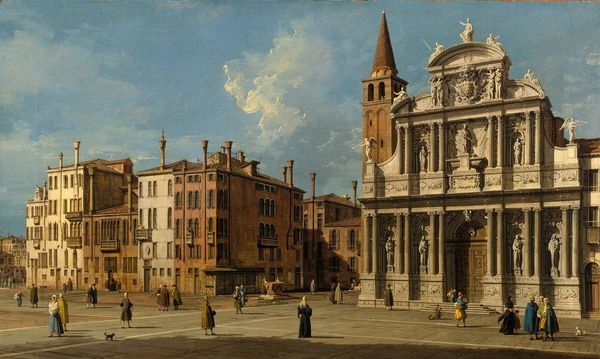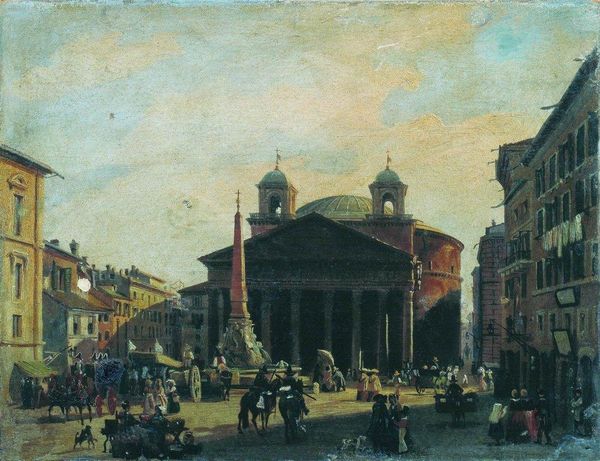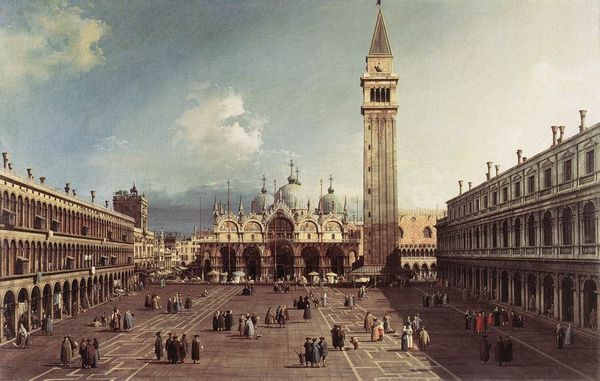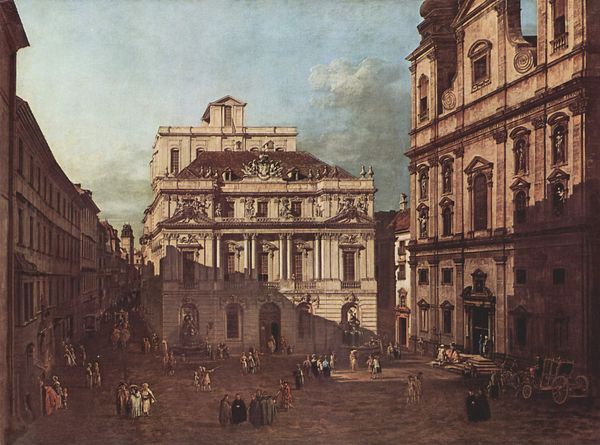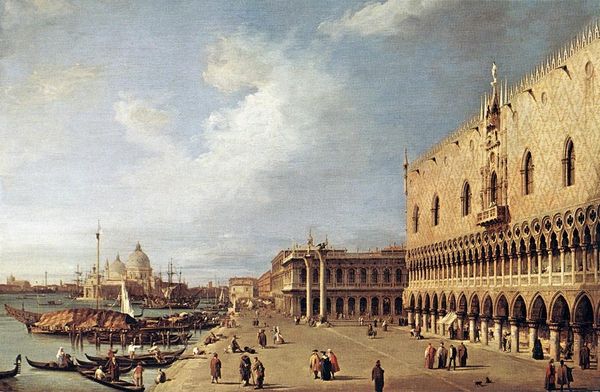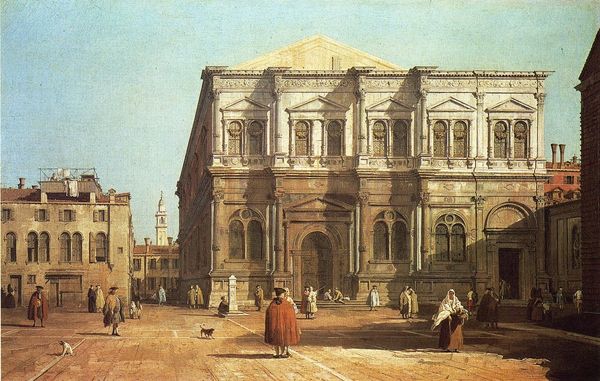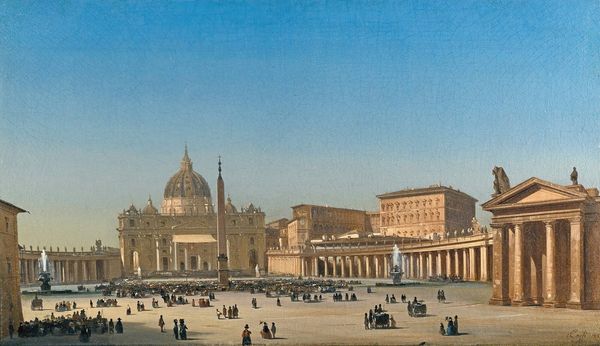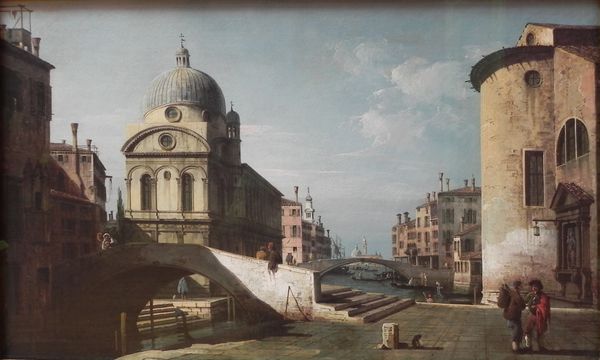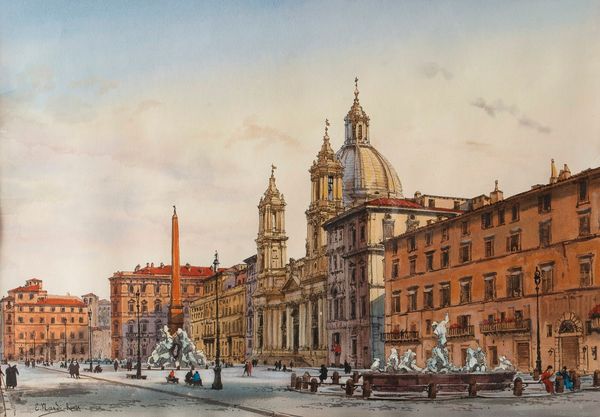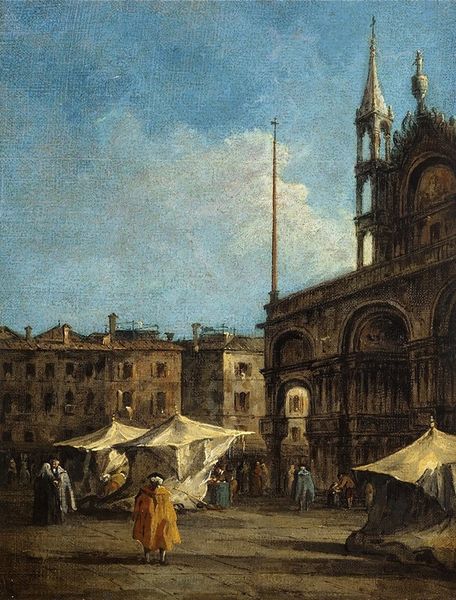
painting, oil-paint, architecture
#
venetian-painting
#
baroque
#
cityscape
#
painting
#
oil-paint
#
oil painting
#
arch
#
cityscape
#
genre-painting
#
history-painting
#
architecture
#
building
Dimensions: 50 x 84 cm
Copyright: Public domain
Curator: This oil painting presents the Church of Santa Maria Zobenigo in Venice; it’s attributed to Francesco Guardi, though the date is unknown. What are your first impressions? Editor: Immediately, I’m struck by the composition. The church facade is quite imposing, yet there’s a certain theatrical quality to the figures scattered in the piazza, like actors on a stage. The cool lighting, the pallid sky, it imbues the whole scene with a feeling of stillness and serenity. Curator: I agree. This tranquility is especially interesting when we think about Venice as a major cultural and economic hub at the time. The Church held incredible power, often subtly shaping Venetian life. Here, though present and powerful, the artist depicts the structure alongside what seem to be ordinary citizens enjoying an afternoon stroll. Editor: Indeed, look at the array of people! Note that lone dog. All going about their lives. Their presence humanizes the space. Speaking of symbols, have you any insight into the various architectural features and sculptures adorning the façade? They must represent particular figures and ideas. Curator: Unfortunately, details of who these figures were meant to honor or embody aren't entirely documented, making a complete analysis elusive. What we know is that the church was, indeed, constructed to celebrate a particularly influential family in the Venetian State, thereby consolidating social connections between church and state at the time. Editor: That checks out. The architecture, then, functions as an ostentatious display of civic pride and religious fervor combined. It would be fascinating to understand what significance it all carried for a contemporary Venetian. Curator: The public role of imagery cannot be overstated. Here is this painting and the way Guardi presents it for the rising wealthy merchant class who valued the image of stability that Venice had. A very public, idealized expression, yes, but art's function, particularly in Venetian baroque, was to uphold order during a time of societal transformations. Editor: Yes, I suppose there’s a potent symbolism in that—the idea of permanence juxtaposed with everyday ephemerality. And there it is captured on the canvas. A beautiful snapshot of Venice's rich symbolism and social stratifications. Thank you for that dive. Curator: A rewarding discussion indeed.
Comments
No comments
Be the first to comment and join the conversation on the ultimate creative platform.
